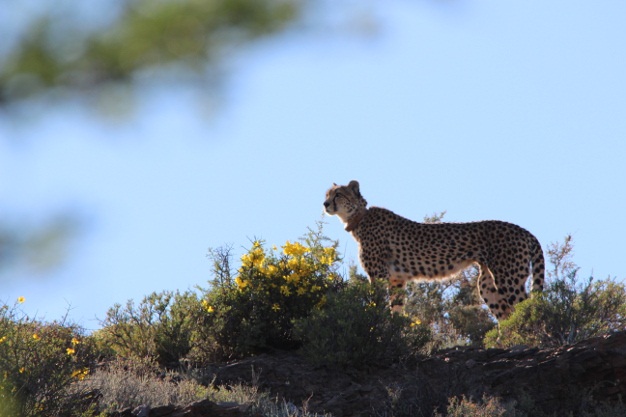2016-09-28 09:30
If that stunning cheetah you snapped on your African safari was wearing a radio collar, does that diminish your pic?
For some tourists and wildlife photographers, yes it does.
The AfriCat Foundation has had to reiterate on its Facebook page just why big cats on its reserve in northern Namibia are collared and the research benefits that this practice brings after a few visitors, apparently, "complained they did not get an opportunity to photograph [the animal] without a collar."
"Clients have to start understanding that when an animal is seen wearing a radio-collar – it’s a positive sighting," AfriCat Namibia said in a post on Tuesday.
AfriCat Namibia is headquartered at Okonjima Game Reserve between Windhoek and the Etosha National Park. The foundation rescues and rehabilitates big carnivores -- including cheetahs -- so that they learn to become self-sustaining and can eventually return to their natural environment.
The foundation said that if an animal on the reserve is seen wearing a radio collar "it means research is being conducted and more information about... that animal 'in a certain environment' will be available in the near future."
"[Visitors] should welcome the efforts made to come up with regular and new and constant information, instead of complaining that they did not get an opportunity to photograph it without a collar," the foundation said.
This is not a new gripe, it seems.
In a newsletter in 2011, the foundation explained that the size of the collars fitted to each rehabilitated predator at Okonjima had diminished in recent years, allowing for a "more pleasant-looking collar."
But AfriCat conceded then that the presence of these collars "is the one feature that creates the most 'talk' – controversial at times -- between keen photographers, operators and the guests staying at Okonjima."
A contributor to a SafariTalk.net thread on radio collars last year admitted that he did not find radio collars "aesthetically pleasing" but he said he could tolerate them if he knew they were part of some valuable research. Another said he tried to get an angle for his photographs which did not show the collar on an animal.
Conservation is high on the agenda at the moment, as the 17th Convention on the International Trade in Endangered Species of Wild Fauna and Flora (CITES) conference is taking place in SA at the Sandton Convention Centre in Johannesburg until 5 October.
The DEA invited the South African public to raise their voices and participate in the CITES CoP17. The invitation calls on wildlife enthusiasts among the South African public to attend the exhibitions and workshops for free.



